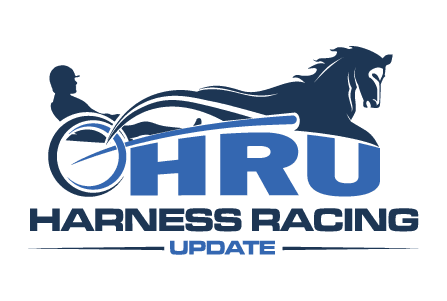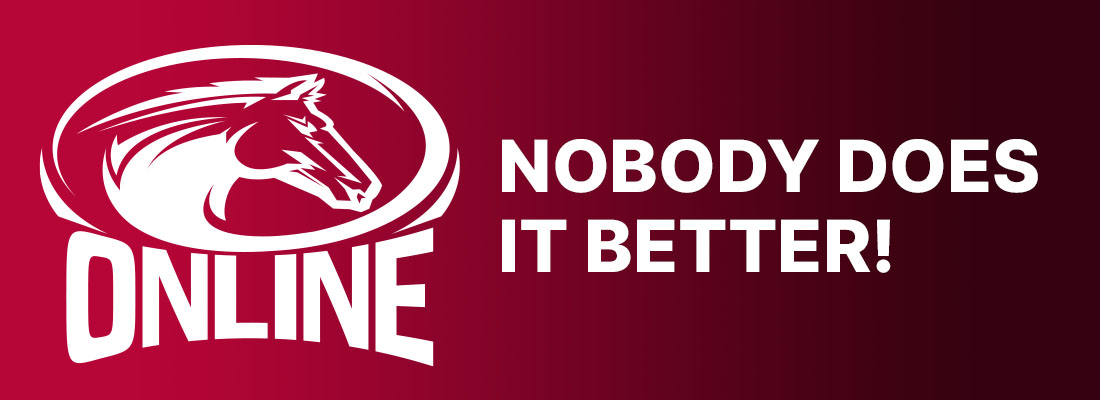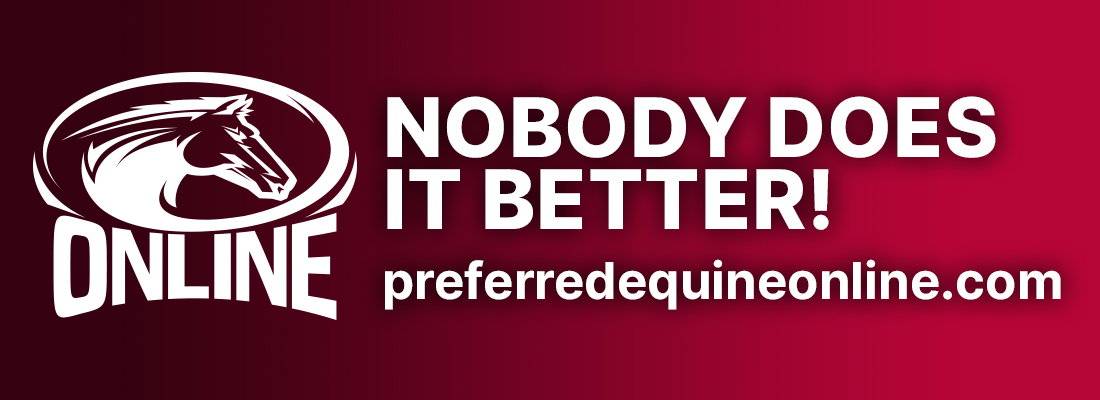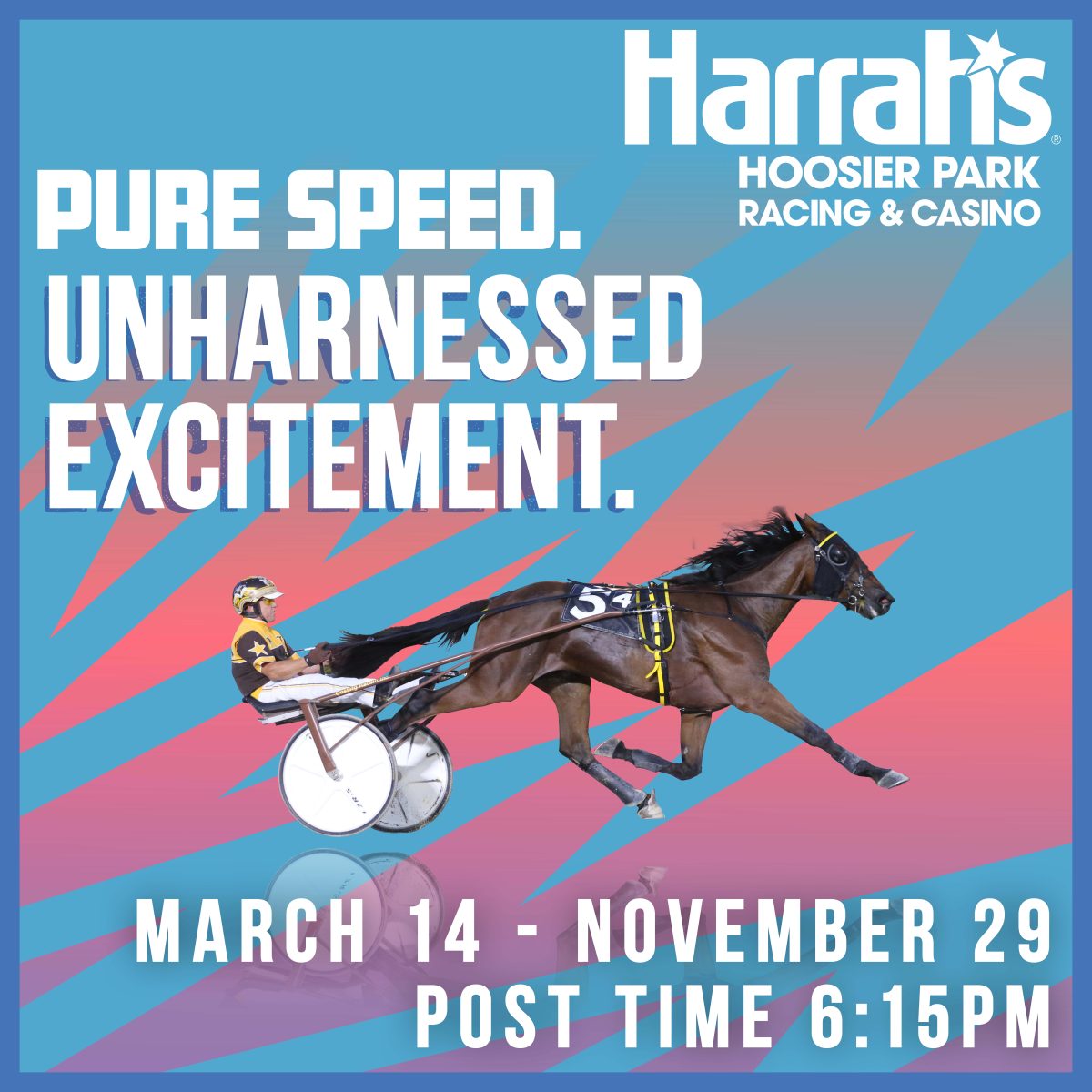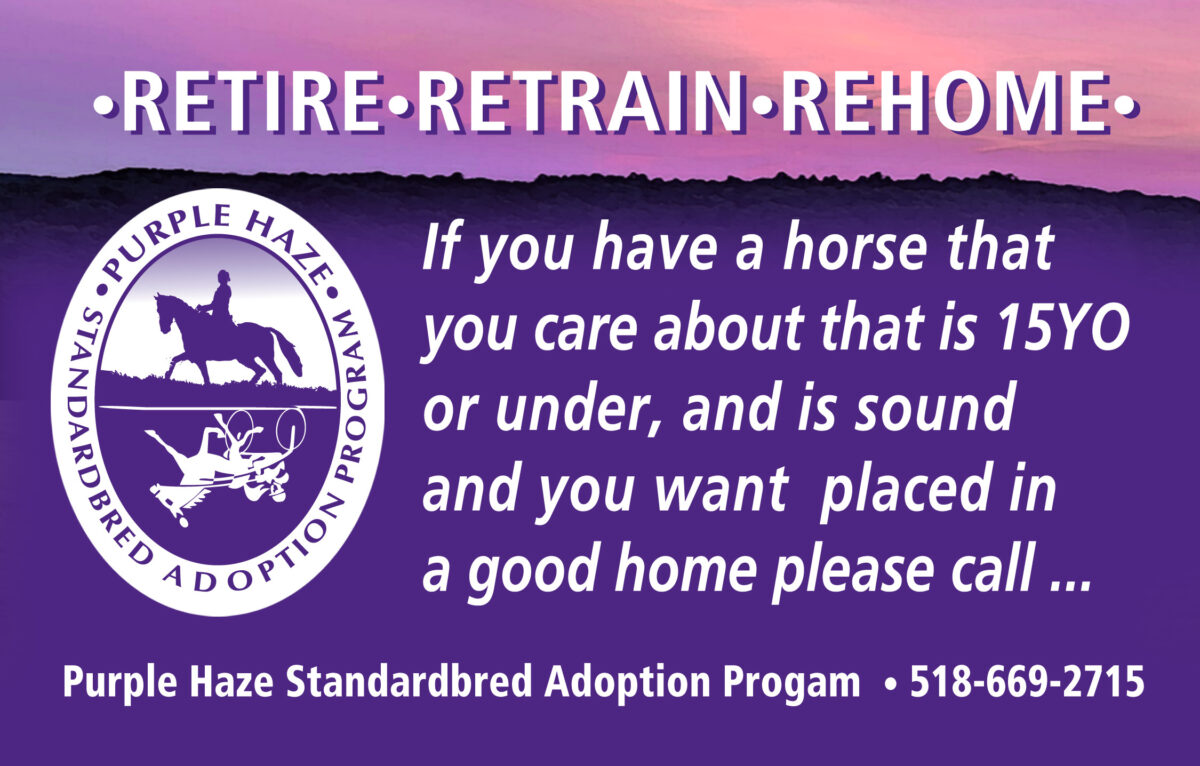Art Zubrod has raised more great standardbreds than anyone
A conversation with the esteemed farm manager of Brittany Farms.
by Murray Brown
It’s a certainty that Art Zubrod has raised more great horses on a percentage basis than anyone ever. It’s even quite possible that he has done so as well on a non-percentage basis. He has raised over 40 horses who have each earned over a million dollars.
Zubrod has been the farm manager for George Segal’s Brittany Farms for the last 38 years. He went to work for Segal on May 1, 1983 and neither one has looked back.
Zubrod has always loved and been involved with horses. It all began in Louisville, KY.
His dad loved horse racing and was the first to introduce Zubrod to the joys and travails of the racetrack.
Zubrod’s mom, Bonnie, was a noted equestrian and is a member of the Equitation Hall of Fame.
Other than a stint as a men’s clothing salesman at the department store, Bonds, Zubrod’s livelihood and lifestyle has always involved horses.
He started by working with his mom with American Saddlebred horses. He thought it was the coolest thing in the world for him a little guy of 14 to be leading one of these massive steeds.
He was in college with the intent to become a veterinarian. After it was clear that wasn’t going to work out, Zubrod said he switched his major to draft avoidance.
In Louisville he became a habitué of Churchill Downs and Louisville Downs where he began betting on horses.
For some time he became a horse trader buying horses at what he felt were value prices and then hopefully reselling them for a profit. As that business grew, Zubrod expanded into show horses with which he became an active dealer. Things went well for a while and then a recession struck. All of a sudden business dried up.
A friend of his had gone to work for Hilda Heydt at Ben White Raceway as second trainer and suggested that Zubrod join him. Florida sounded just great to him, so down south he went. This scribe asked him if he learned any swear words working for Hilda.
“Yes, but not as many as I learned in my next job working for Clint Hodgins.
“Going to Florida was great not only because I got to work for two of the more legendary people in the history of the sport, but far more importantly, because I got to meet my wife and life partner Leah Cheverie while down there. Leah was working for Jim Miller then at the height of his success with the horses owned by Mel Barr. From the onset of our relationship, Leah has been involved as at least an equal partner in any success that I’ve attained. She is as good with horses, especially those perceived as bad or unmanageable, as anybody that I’ve ever known.
“We then worked for Howard Beissinger for the summer of 1978. I gained a pretty good background and learned a lot working for those legendary horse people. Eventually though, we decided we needed some stability in our lives. Emotionally, I also longed for the Kentucky I had known and with which I had grown up.”
Art got a position as barn foreman at the Spendthrift Training Center. At that time, Tom Crouch was starting Kentuckiana Farms. Leah was hired in January of 1978 and Tom Crouch offered Zubrod a job. It wasn’t an easy decision but he did accept the offer. Zubrod was with him for four and a half years.
“I was approached by Ken Seeber who was then running Lana Lobell Farms. Although the headquarters of Lana Lobell was then in Bedminster, New Jersey, where they stood their stallions and conducted their sales, they raised their yearlings in Hanover, Pennsylvania where they still owned and leased a significant amount of acreage. Ken asked me to come to work for them and to be in charge of raising the annual yearling crop. It was not a good fit for me. Hanover was not Lexington and we missed the horse atmosphere of Lexington. It was nobody’s fault. We just were not happy there.
“I remember exactly how the opportunity to come work for George transpired. It was a Friday evening in Hanover. I was standing in line waiting to buy a lottery ticket. I came upon Ray Magee. Those who knew Ray, knew that he was an inveterate gossip. If anything was happening in harness racing, Ray was among the first to become aware of it. He mentioned to me that he had heard that George Segal was looking for a farm manager for his farm that he leased from Hamburg Place.
“I had met George and knew him, but not all that well. I went home and immediately called him. Here was a chance to become involved with a top level individual for whom the sky was the limit as far as harness racing was concerned. I made the call and for whatever reasons, we hit it off. The date was May 1, 1983.”
Tell me about George Segal and your relationship with him.
“George is one of the brightest and nicest individuals to not only have been involved in harness racing, but also to have inhabited this planet. I have learned a lot about business from George and have to laugh when I remind him of one of those principles if he is about to stray. Like me, he doesn’t like change, so it’s important that we get it done right the first time. He likes to be involved with bright and capable people. I hope I fit the description. Once involved, he is incredibly loyal and trusting. When it came to horses, I always wanted to be involved with only the top ones. George shares that feeling. He really doesn’t want to become involved with the day-to-day minutiae of the farm. That is up to those working there. That is the reason you were hired. He does care deeply about the horses and people who work for and with him. More than a boss, although he is that, he is a friend who cares about people as well as the work they do on his behalf.”
What about your staff?
“We have been blessed with a great staff but we look at it more like family. Patty Logan was hired in 1986 and I told Leah after her second day that I had found my yearling foreman. Her then boyfriend Dale Logan came on board shortly after and they soon married. We would not be the farm we are without them. Several of the employees have been with us for 20 years or more. Donna Schulte and Stephanie Ball keep the office running smoothly. Our crew is the best in the business in my mind. All are top horsemen and horsewomen.”
You’ve raised innumerable great horses. Do you have a favorite among them?
“That would have to be Artsplace. I absolutely loved him. He was something special all the time. He was somewhat of an odd duck, much like his mother Miss Elvira. He was a loner and not the most social of horses. He never started any trouble with his fieldmates, but he could end trouble quickly. His mom was a disciplinarian. She wouldn’t let her foals near her or her food while she was eating. When Artsplace returned to the farm after his 3-year-old season, his feet were in terrible shape. He was dead lame on them. We had to strip them and eventually grow new feet . We then sent him to Bob McIntosh who guided him to his undefeated season in 1992. When I sent him to Bob I asked him to keep them on as long as possible. Bob felt he was doing fine, so he raced him all season with bar shoes — pretty darn unusual. That was one of the greatest feats that I’ve seen in all my years in the sport — the undefeated season, not the shoes. Of special significance was the great joy the horse brought to Brian Monieson who co-bred and owned him with George. Brian was one of the finest people I’ve had the pleasure of knowing. He left us far too soon.”
Any others?
“Oh, yes. There have been many of them. Perhaps the best looking horse we ever had on the farm was neither bred nor owned by George. That was Ramblin Storm who we boarded for Arlene and Murray Traub. He also had bad feet that needed care. But what a majestic creature he was! It was a whole lot easier taking care of their horses than it sometimes was tending to the Traubs. Arlene was tough, but you could reason with her. Murray was an A one pain in the ass. We’d get into all sorts of unnecessary arguments. I told him more than once that if he was unhappy here, then he was free to move his horses. He never did, though. I guess he must have been satisfied with the way they were cared for.”
How about horsemen?
“There have been many great ones. My all-time favorite would have to be Gene Riegle. He had the best eye of any person I’ve ever known. He could tell at just a glance whether he liked one or not. He’d often get the grooms upset when after working to make a horse presentable, Gene would look at it for a second or two and have it put away. He was rarely wrong in his judgments.
“Billy Haughton was one of a kind. We’ve never had one like him. We will never have one like him again. I firmly believe that his loss was the single most devastating thing that has happened to our sport in all the time I’ve been in it. He created and upheld all parts of the marketplace. Other than the horses that he didn’t like under any circumstances; there were darn few of those for this man who’s glass was always half full, he would establish a value to any horse of any consequence that entered the sales ring.
“Stanley Dancer was a great horseman of course. He was different than WRH in that he knew exactly what he was interested in and wasn’t going to waste anybody’s time with those with which he had no interest. Like with Billy, it was a pleasure to show horses to him. I would also include Ron Gurfein but I know we will speak about him later.”
How about those of the present generation?
“Tony Alagna is the closest to WRH that I’ve seen. He has so much on his plate and thus far has been able to balance it as well as possible. He is an incredibly hard worker as well as a great person. He is a great communicator with owners, as was Billy. He is the consummate optimist who’s glass is always at least half full. I don’t know that he can party as well as Billy did, but he is pretty darn good at it. I’ve seen him go directly to work after a hard day’s night.
“Chris Ryder is definitely one of the best that I’ve personally dealt with. After he bought Bettors Wish from us as a yearling I asked him if I could buy in for a quarter of the colt. Thankfully, he complied. It was a great ride with the horse. Hopefully the same sort of success will continue through his stud career.
“Jimmy Takter could be considered the greatest ever. Certainly his record places him in that category.
“Chris Ryder’s fellow Down Under trainers Brett Pelling and Nifty Norman have compiled incredible success while here.
“Bob McIntosh is, of course, an all-time great. His inclusion in two Halls of Fame bears credence to that.
“Joe Holloway and Linda Toscano are also on my list of present-day greats.”
Let’s talk about your best friend Ronnie Gurfein.
“I first met Ron at Sunshine Meadows and was floored with Victory Dream. He looked like he was going a mile in 2:20 except he went in 2:00. We decided to make an offer to buy half or whatever part could be bought. I told George the following week after reading the vet report that it said two things: One, you can’t buy him and two you have to give this guy some horses. We immediately hit it off and became very close.
“Ronnie was one of a kind. Anybody who knew him would give testament to that. He was a great horseman, but I’ve known lots of great horsemen. He was a man of the world, proficient in many areas. When we got together we might talk about horses for 10 per cent of the time. Then we might stray to a multitude of topics — anywhere from government, food, wine, travel or people. You might not agree with him but each and every conversation left you knowing more.
“I was one of the few horsepeople, maybe the only one, with whom Ronnie was in touch once he received his diagnosis of brain cancer. Even with me, my contact with him was far too short and infrequent. If you knew Ronnie, you knew he was exceedingly vain. He just didn’t want anybody to see him in a diminished state. He told me about the diagnosis shortly after he received it. He asked me to keep it private. I did so. In retrospect, I wish that I had talked him out of it. He had so many friends who cared about him and wanted to send their personal goodbyes. They were hurt and felt shut out. We are holding a memorial event for him at The Red Mile on October 9. I expect that there will be some great stories told then.”
I’ll ask you the question I ask most farm managers at this time of year. How has your yearling traffic been?
“I would say pretty comparable to previous years. We’ve had our normal number of lookers, but the same ones. No new faces that I recollect. That is as it usually is. It’s mostly the larger and most successful trainers that come to visit the farm. The smaller more geographically spread out trainers will come to look at the yearlings once they are shipped to the sales site.”
Here’s a free plug for you. Where is the strength in your consignment this year?
“I believe that overall the consignment has great balance. I would say that we are probably deeper in quality pacing fillies than we’ve ever been. We have ten or so, any one of which could become a champion. If I had to pick just one I’d go for the sister to Blue Diamond Eyes. She is a knockout and checks all of the boxes. If I were looking for a possible bargain, I’d look at Hip No 364 Morning Edition. He is a magnificent colt who comes from a great family. But he has only one eye. He gets along just fine that way. I doubt that he is aware of his impediment.”
Yours and Leah’s two daughters, Deveau and Renee, have carried on the family tradition of equine involvement.
“Both my daughters work with my sister Cindy at Zubrod Stable, which my mom and I started in 1967. My daughter Deveau is also the coach of the University of Louisville equestrian team. Both daughters have won World Championships and International competitions. The love for horses has also carried forward to the next generation. My grandchildren are avid riders They ride and participate in horse shows. I would be surprised if it was otherwise.”
How has COVID-19 affected you?
“If I had to use one word I’d say immensely. We shut ourselves off for more than a year. We haven’t travelled, and did not eat out during that time and have pretty much stayed on the farm. Recently, things have opened up somewhat. We do go out to eat, but always try to go early, before restaurants get crowded. I love to cook, so being at home wasn’t much of a trial. We have recently begun going to the grandkids’ horse shows. But we are careful about the hotels we stay at. I think things are gradually getting somewhat better. I hope that I am wrong. But I think that this scourge in one form or another will be with us for some time. It will be two years since Leah and I have been able to visit her family in PEI.”
Have a question or comment for The Curmudgeon? Reach him by email at: hofmurray@aol.com.
